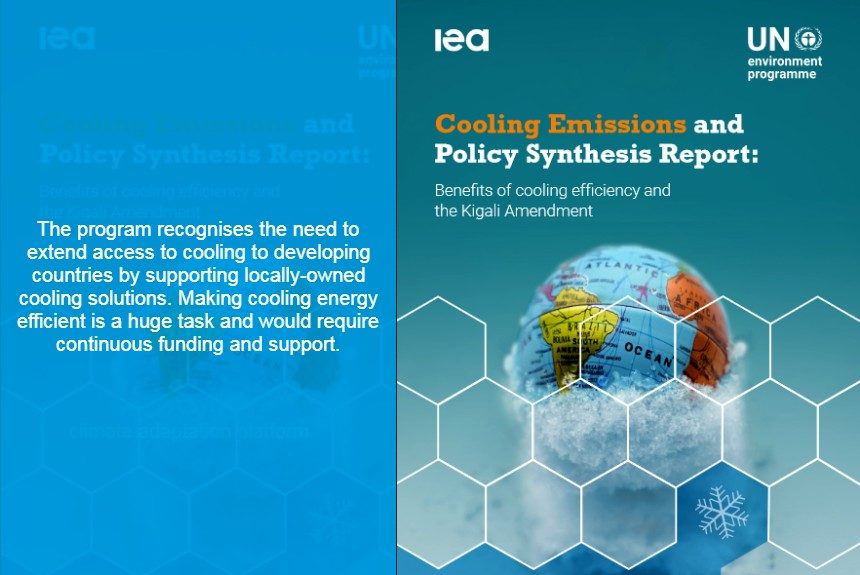As the world heats up due to the onset of climate change, efficient heating approaches are needed to combat the adverse effects of heat, especially in developing countries, and reduce the harmful and heat-causing gases used in air conditioning and refrigeration appliances.
According to an article on the Kigali Cooling Efficiency (K-CEP) website, the world’s 30 hottest cities are in developing cities.
Developing countries are also more disproportionately affected by hot days and high temperatures. Heat stress is becoming an increasing burden due to the onset of climate change.
Heatwaves lead to deaths no matter what country they hit and affect the most vulnerable groups of society – the elderly, women, and the poor.
Cooling and refrigeration have many valuable and critical applications, like food storage and preservation of medicines and vaccines.
Many studies also show that a cool and comfortable classroom improves students’ concentration, leading to better academic performance.
Adequate cooling at work, especially in hot countries, can increase productivity and contribute to a country’s economic growth.
On days with average temperatures above 65°F, people start to turn on their air conditioners. Hydrofluorocarbons (HCFs), a common refrigerant used in air conditioning, are ten thousand times more powerful than CO2 in causing global warming. HCFs also account for about 20% of climate pollution by 2050.
K-CEP is partnering with 44 developing countries worldwide and is setting up a program with its funding partners to support the Kigali Amendment of the Montreal Protocol. The Kigali Amendment, which took effect on 1 January 2019, will phase down the use of hydrofluorocarbons (HFCs), a potent global warming-causing gas and a common refrigerant.
According to their website, 17 foundations and individuals have pledged $51 million to help increase the energy efficiency of cooling in developing countries.
The program recognises the need to extend access to cooling to developing countries by supporting locally owned cooling solutions. Making cooling energy efficient is a huge task that would require continuous funding and support.
According to the UN Environment Programme and the International Energy Agency report Cooling Emissions and Policy Synthesis, converting to energy-efficient cooling systems will cut down significant greenhouse gas emissions, or as much as 460 billion metric tons.
It will also allow savings of $2.9 trillion from electricity generation and distribution costs by 2050. An investment of $1 trillion could increase GDP by 3.5%, decrease global carbon emissions, and create millions of jobs. The report says one way to transition to climate-friendly refrigerants is by upholding the Kigali Amendment to the Montreal Protocol.
Countries can implement the Kigali Amendment by applying a minimum efficiency-performance standard, promoting energy-efficient labelling, and reducing the use of refrigerants and mechanical cooling through building codes.
To view the entire report, click the button below:
Sources:
Why Cooling. (2020). Kigali Cooling Efficiency Program. Retrieved from https://k-cep.org/why-cooling/
Climate-friendly cooling could cut years of Greenhouse Gas Emissions and save US$ trillions: UN (2020, 17 July). UN Environment Programme. Retrieved from https://www.unenvironment.org/news-and-stories/press-release/climate-friendly-cooling-could-cut-years-greenhouse-gas-emissions



Leave a Reply